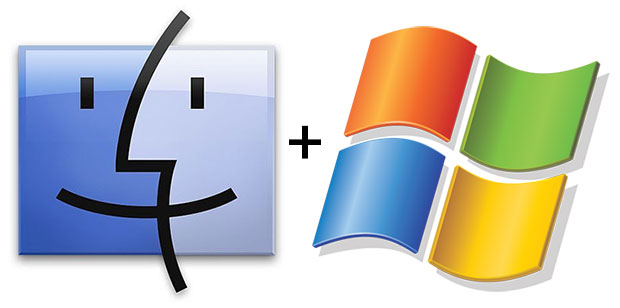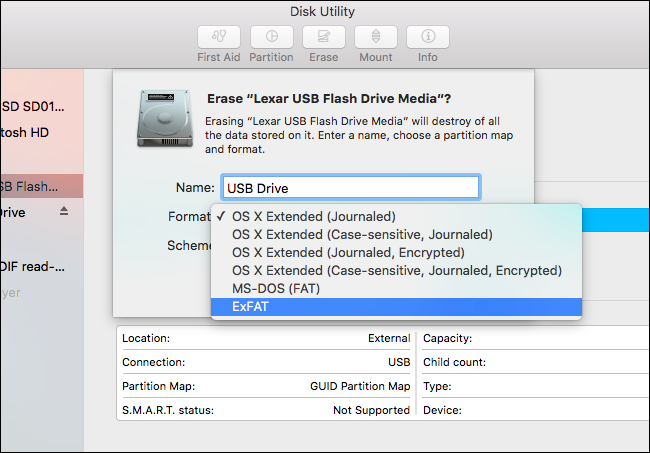How to format and create a USB drive or pen drive that is compatible with Windows 10, 8, 7 or Mac or Linux.
A file system is a method and structure of data used by an operating system, called Windows, Linux or Mac OS, for reading media files such as disks, removable drives, etc.
Format USB Flash Drives to Work With Both Mac and Windows 7 by Jack Scicluna Photography, LLC - guest writer. The latest trend with computers is not including a CD/DVD drive. Formatting your USB drive using Windows tools. You can easily format your USB drive with just the built-in features of your Windows computer. Follow the steps below to perform this: 1. Plug the USB drive into the USB port of your computer or laptop. Go to My Computer and right-click on your USB drive. A drop-down menu will appear.
Types of File Systems
It is vital that we are aware that each developer implements a series of file systems for their operating system, for example, we have the following:
Windows:
- FAT
- FAT32
- NTFS
- exFAT
Format Usb Flash Drive For Mac And Windows
Linux:
- ext2
- ext3
- ext4
- ReiserFS
- Swap
Mac OS:
- HFS +
- MS-DOS (FAT)

- exFAT
- APFS (Present in the new edition of macOS High Sierra)
Each system manages its file system and in this way, USB drive with NTFS can only be recognized in Windows environments but not in Linux or macOS environments, even if it is accepted in macOS we can not make changes to it.
At this point, another question arises, what type of file system to use that is compatible with these three operating systems?
Easeus data recovery 12 mac os. EaseUS Data Recovery Wizard is a tool dedicated exclusively to recovering files you thought were lost from the deepest, darkest, most inaccessible parts of your computer. Firstly, this application allows. EaseUS Data Recovery Wizard is a professional data recovery tool for your Mac. Recover lost files, even after deleting a partition or formatting your drive.
In technical terms, it has been recommended that the file system of the USB drives be FAT32 thanks to the fact that it is an old file system and that it has evolved to FAT32 at present, but there is a format that is much better regarding security, reliability, and compatibility: exFAT.
Let’s see in detail what is and what covers each of these file systems.
Download skype for os x 10.7.5 for free. Communication downloads - Skype by Skype Limited and many more programs are available for instant and free download. Pages is a powerful word processor that lets you create stunning documents, and comes included with most Apple devices. And with real-time collaboration, your team can work together from anywhere, whether they’re on Mac, iPad, iPhone, or using a PC. Pages pour mac os x 10 7 5 7.
FAT32:
This format is one of the most compatible, but due to its useful life, it has been in force since the 90s, it has a series of limitations that can affect the pace of updates we are experiencing today.
Being a format with so much active time is compatible with virtually any operating system.
As mentioned, it has its limitations such as the inability to host files larger than 4 GB or that partitions with this file system cannot have more than 8 TB capacity.
exFAT:
exFAT is in a way a more modern and dynamic FAT32 which was developed in 2006 and is present in most modern operating systems.
By default, all traditional operating systems, Windows, Linux or Mac OS are compatible with exFAT, and its use is highly recommended for external drives, such as USB devices or external drives, thanks to its simplicity and multiple features.
Now we will analyze a little more in detail the fields of action where these two file systems are compatible to know which is the best option to choose.
Device Support
This is the first fundamental field since if the USB device formatted with FAT23 or exFAT is not compatible with the device where it has to be connected it will be impossible for it to be recognized and to access its contents.
In this field, we can say that FAT32 has an advantage over exFAT because, being an old file system, it is compatible with all operating systems and devices such as game consoles, Smart TV, multimedia players and others.
ExFAT, although it is currently compatible with more than 95% of the devices on the market, can still find individual limitations in some Linux distros or Android devices.
In some Linux distros the exFAT file system will not be recognized immediately, so we must install the several utilities by executing the following line:
Then update the packages running the line:
Reading & Writing Speed
Another of the pillars in a file system is the ability with which this can access the content and read or write it since this depends on optimal performance which is a highly required value today. Undoubtedly in this regard exFAT outperforms FAT32 to be a much more recent technology which is compatible with USB 3.0 which can have a transfer rate up to 5 Gbps.
In the previous graphic of flexense we can see the performance of exFAT on FAT32, and in the following link we will be able to look in detail multiple operations carried out by this software developer called Flexsense
Size of Supported Files

Undoubtedly on this field wins exFAT because, as we mentioned above, FAT32 only allows files with a maximum capacity of 4 GB in partitions that do not exceed 8 TB of storage while exFAT is virtually unlimited in this aspect to support 16ZB files.
How To Format a USB drive with exFAT
Starting from the detail that exFAT is the most practical and functional file system, unless we are not going to use files of more than 4 GB, this is the process of formatting the USB drives with exFAT.
It will first be necessary to install the exFAT tools by executing the following command, as we have mentioned before:
Later we run the fdisk -l line to list the active disks in the system.
There we will locate the USB drive which has the extension /dev/sd** (Replace the ** with the indicated number)
Once the USB disk is identified, we will execute the following syntax:
As we understand, we have the freedom to select the best file system for our USB drives to have the best capacity and performance.
Dec 03, 2020 • Filed to: Windows Computer Solutions • Proven solutions

USB Flash Drives are the new file briefcase in this world of technology. It allows you to store as many files you want within a little device. It makes files very compact, easily transportable, and organized. However, just like with a filing system used in paperwork, USB drives also make use of file systems. The most common file systems used are NTFS, exFAT, and FAT32. If you’ve been using flash drives and other external storage devices for a long time, you may be already familiar with this. Each file system has its pros and cons. Many PC users are opting to format or change their file systems to NTFS. If you’re unfamiliar with the file system and have no idea why this needs to be done, keep on reading. In this article, we will provide you with three easy ways you can format your USB drive to NTFS.
Why Do You Need To Format a USB Drive to NTFS?
The default format used by most USB flash drives and other external storage media is FAT32. Some people are fine with keeping this format. But for most users, they always find the need to convert or format their USB drive to NTFS. This is for many reasons. With a USB drive that uses the FAT32 file type, you can only copy or add files less than 4GB. This may be a hassle for some users who want to transport large files like movies, program installers, etc. Meanwhile, NTFS doesn’t have this limitation. You can copy or add files of any size and the partition sizes usually have a large capacity.

What is NTFS?
NTFS is a type of file system. It stands for the NT File system and is also called the New Technology File System. It’s a way of organizing files within a flash drive. It’s a new improvement from previous file types like File Allocation Table (FAT) or Extended File Allocation Table (exFAT) previously used by Microsoft Windows. Because it’s a relatively new file type, it has increased security from its new features like file permissions and encryptions. NTFS also has a Change Journal where the driver keeps track of the changes made within the drive. This means that if ever your PC unexpectedly shuts down or you experience a system crash, you can recover files that were lost during the event.
Here are three proven methods on how to format USB flash drive to NTFS.
Method 1. Format USB Flash drive to NTFS using Disk Management
1. Find My Computer in the Start menu or by typing it in the search bar. Right-click on it and click on Manage.
2. In Device Manager, look for your USB drive in the Disk Drives tab.
3. Right-click on your drive and choose Properties.
4. Under the Policies tab, click on Optimize for performance. Select OK.
5. Go to My Computer and look for your drive. Right-click and choose Format in the drop-down menu.
6.In the format options that will pop-up, select NTFS to convert your drive to NTFS.
7. Select Start and wait for the process to finish.
Method 2. Format USB flash drive to NTFS using Command Prompt
Using Command Prompt, make sure to type in the exact commands to avoid unexpected errors.
1. Launch Command Prompt by typing in cmd in the Run tool or typing Command Prompt in the search bar. Select Run as administrator.
2.Type in the command:
convert G: /fs:NTFS
NOTE: In this command, we’re formatting drive G. Change this to whatever drive letter you’re trying to work with.
Method 3. Formatting your USB drive using Windows tools
You can easily format your USB drive with just the built-in features of your Windows computer. Follow the steps below to perform this:
1. Plug the USB drive into the USB port of your computer or laptop.
Format Usb Drive For Mac
2. Go to My Computer and right-click on your USB drive. A drop-down menu will appear. Choose Format…
3. The format window will open. Here you will see the device’s capacity, File System, and Allocation unit size. You can also rename the volume label. The Restore device defaults button will revert your drive’s settings to default. You can change the file system in NTFS or FAT and also assign the unit size.
4. Select the Start button at the bottom of the window and click OK to begin the format and erase all the data contained in the drive.
Flash Drive For Mac And Pc
Formatting your USB drive may seem intimidating at first. Formatting changes the file type of your drive and along with this, also wipes out all the data saved within. So it’s important to back up all the files to your computer or another drive before performing any format. With any of the methods previously mentioned above, you will be able to perform a format of your USB flash drive easily and quickly.
Video Tutorial on How to Recover Lost/Deleted Partition Data?
Partition Recovery
- Partition Management
- Solve Partition Problems
- Partition Tips